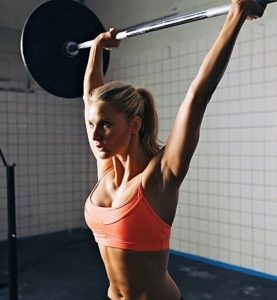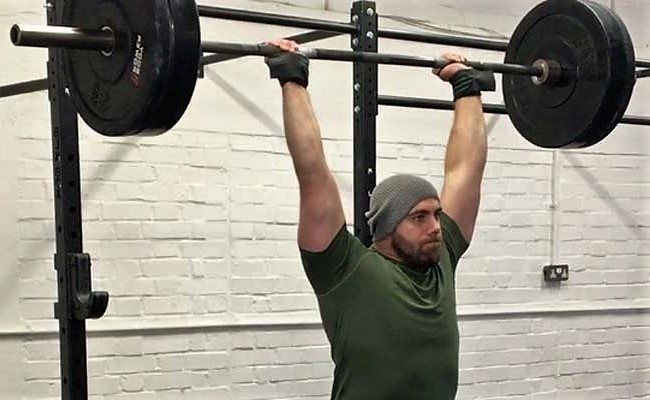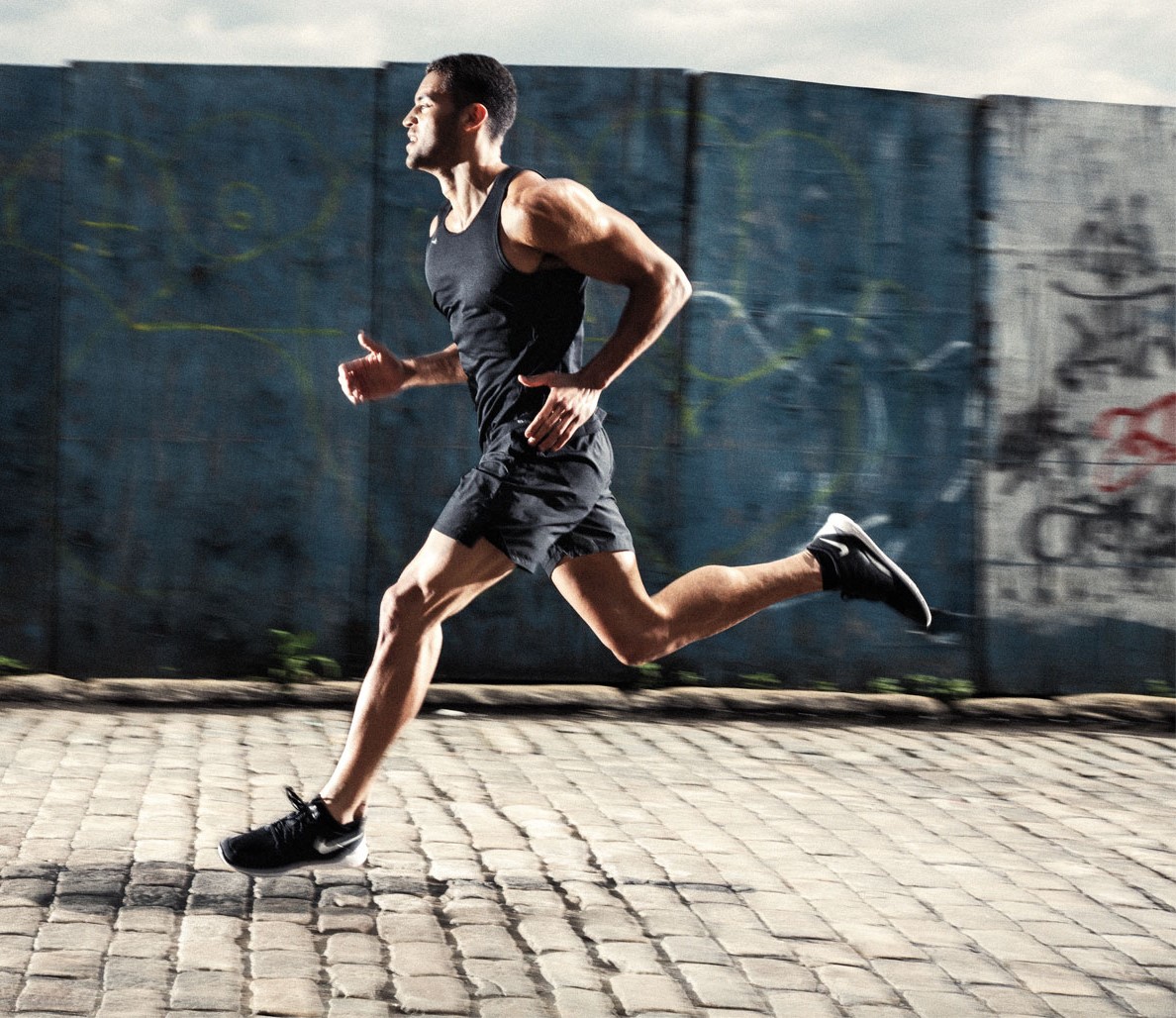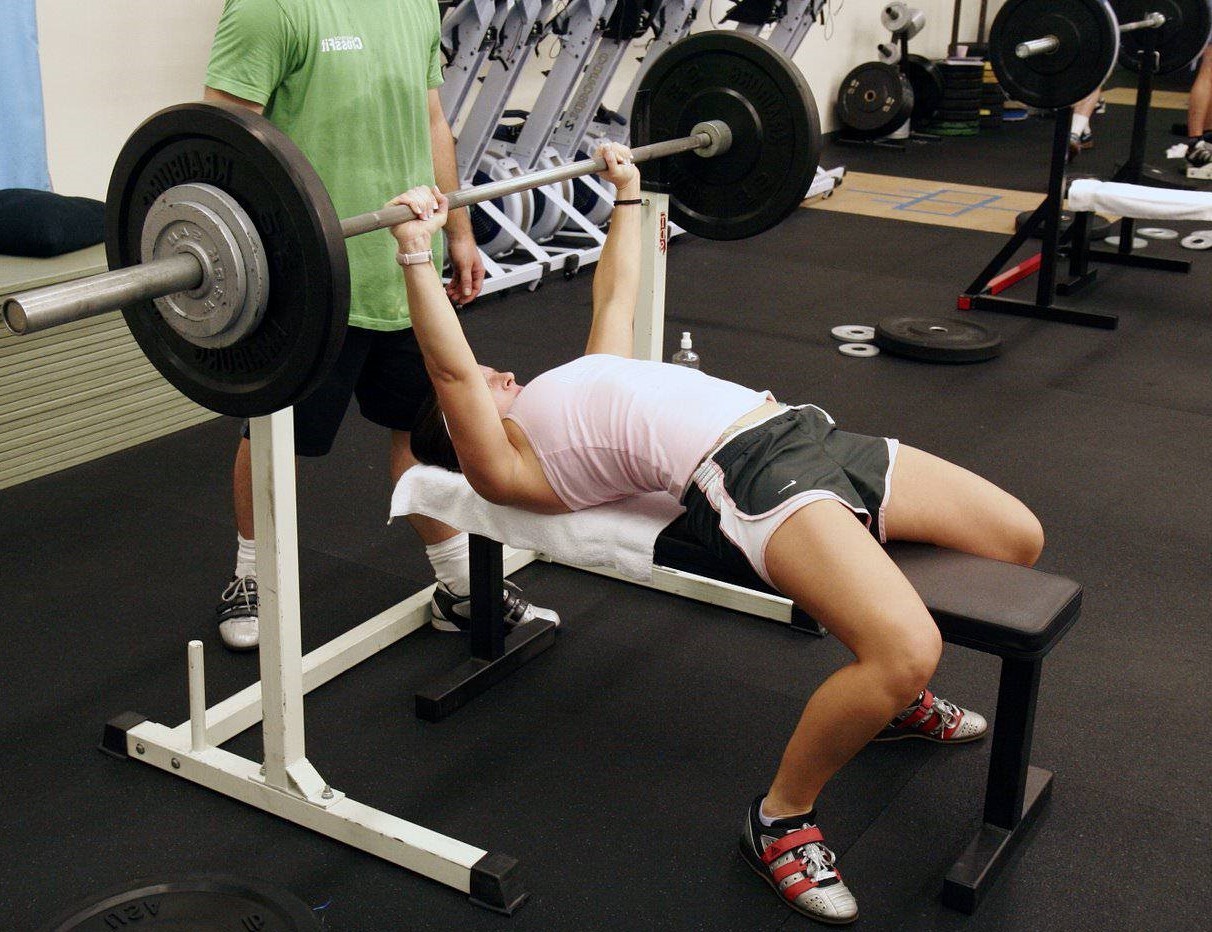I would say that objectively, the coolest lift is the overhead press. A strict press requires a ton of power, upper body strength, and while it’s always going to be the smallest lift in the room, I also think it’s generally the most impressive. If powerlifting is missing anything, it’s an overhead movement.
But I understand why the overhead press isn’t in powerlifting – heck, it isn’t even in weightlifting anymore. What used to be the clean and press has become the clean and jerk, and snatching, while technically amazing, doesn’t involve an overhead press. The reason for that is pretty simple – even with the rule that you can’t use any leg drive, folks found a million and one ways to cheat the system and lift ridiculous amounts of weight overhead with technique that would make most people wish they didn’t have a spine, so they didn’t have to collectively feel the way that looked.
Presses in decades past usually involved ridiculous amounts of spinal flexion, with dudes almost bending over backwards to get as much of the body involved in the press as possible. The result was a change in the rules, because the community decided that it was impossible to properly judge form if you included the press as an Olympic movement.
Overall, this was the right call. Since then, ridiculous pressing form has died out and anyone who teaches the strict press is usually also going to be very strict when it comes to execution. While weightlifters press overhead all the time – you gotta get those crazy shoulders somehow, and you need to learn to press before you jerk – powerlifters don’t really press as much. And I think that’s a shame. Sure, you might press once a week depending on your cycle – which is fine – or you might even not press at all, or press once per cycle, or just for fun.
I think the press has much more carryover into the bench press than most people give it credit for, and when it comes to aesthetics – and shoulder health, which is poor in many powerlifters – I’d say the overhead press builds the best upper bodies out there, both in terms of looks and performance.
However, the press requires a large amount of proficiency, in my honest opinion. You can’t press a lot of weight overhead and expect to keep all your joints intact if you’re pressing lazily, or with poor form. Out of all major lifts, I would also argue that staying tight and being fast is more important in the overhead press than in any other lift. You can afford not to be so aggressive when you’re squatting, and even deadlifting to a degree. But you can’t be all loose and easy when pressing overhead.
The fact that it has such a steep difficulty curve, requires healthy, flexible shoulders to begin with, and often forces trainees to start with a humbling amount of weight on the bar goes to show why the overhead press is generally ignored by a lot of young or inexperienced lifters. But if you’re not overhead pressing, you’re missing out. Now, here’s how I approach the press.
Preparing for the Overhead Press
I start with the bar at shoulder height, roughly where my collarbone is. The exact height of the bar will depend on how tall you are, and what your power rack/rack looks like. The next step is pretty simple, and that’s to find the right grip.
Personally, I grip with the thumbs around the bar. You can opt for a thumbless grip, and some argue that it’s easier that way – in the sense that the bar is more in-line with the wrists. I personally go with the thumb for comfort reasons, but also because I figured if I ever did jump into weightlifting, it would make more sense to go with a grip I’d actually use there too.
Next is stepping under the bar. Typically, I aim to have my midfoot right under the bar, much like it would be when I’m unracking weight for squats. Once I grab the bar, I take a deep belly breath, and brace. Now here’s where the violence comes into play.
Once I start to hover around the 80% 1RM range, I rip the bar off the rack while maintaining tightness and go straight into the press. There are a few things I’ve trained myself to get used to doing just before I actually physically press the barbell off my shoulders. These are:
- Push my chest out, keeping my thoracic spine just slightly bent while maintaining a very rigid lumbar spine.
- Squeeze my glutes as hard as possible, maintaining that stable lumbar. Tight glutes, tight hips, tight abs.
- Be violent with the press. Rip it off the rack, and don’t waste a single moment. Unlike the squat, you don’t have that split second to compose yourself just before you go down. Instead, think of trying to do one smooth motion from the rack straight into the overhead position.
Keeping a Stable Back
A heavy overhead press is best done with a completely stable lumbar spine, locked out hips, and a bent upper back/thoracic spine. The muscles in your upper back and abs are incredibly strong, by far strong enough to manage the weight you’re going to be strict pressing overhead. This is theoretically why people used to bend like crazy when doing the press, but we’re limiting ourselves here by requiring a completely straight lower back and hips.
 For that, you’ll obviously need a strong core. Core training ties directly in the overhead press, as does upper back training. I find front squats to synergize perfectly with the overhead press, because they prepare your rib muscles (intercostals and the like), as well as your upper back musculature.
For that, you’ll obviously need a strong core. Core training ties directly in the overhead press, as does upper back training. I find front squats to synergize perfectly with the overhead press, because they prepare your rib muscles (intercostals and the like), as well as your upper back musculature.
Another way to get the benefits of front squats without actually doing the squatting bit is to do isoholds. These are terrific for strength, and quite simple as well. You just walk out with a heavy weight on your shoulders and hold it there. Don’t squat.
Snatch-grip deadlifts and snatch-grip overhead pressing I find builds stable shoulders and stronger traps. Snatch-grip behind-the-neck presses are also generally the best thing for amazing deltoid strength, but you need to go really easy on them, and do them with just the bar to start with. Don’t do them at all if they feel uncomfortable, and instead take time to work on your shoulder mobility and overhead mobility.
Squeeze Your Glutes, Overhead Press Better
To prevent yourself from bending your body under the bar to get into a more advantageous position for pressing, you need to employ some sort of brute force cue to keep your body in line. That cue, cut down to its simplest form, is just to squeeze the hell out of your glutes. Keep them incredibly tight. It helps if you can transfer that squeeze and distribute it throughout your entire lower body. While you can’t use your legs like you might in a bench press or push press, you’re allowed to take advantage of the fact that you can get just a bit more power out of your upper body if you flex everything else as well, including your legs. It’s the old trick for developing a crushing grip – don’t just flex the forearm but get everything else that might be relevant involved as well.
How Low?
I don’t think you need to hit your clavicle between each rep. Arm leverages will generally determine how far you need to go at the bottom of each rep. Some people have pretty long arms (like me) and forcing them to go too low will generally put too much torque and pressure on the rotator cuff, leaving your shoulder feeling a bit iffy.
In addition to the forearms being perpendicular to the bar and the floor, they should also be pointing straight down at your bottom position. If your elbows tend to shoot backwards as you reach your clavicle, you either lack mobility in the shoulders or should just refrain from getting the bar that low. A healthy minimum would be to get the bar under the chin, while keeping your chin tucked. That leaves about two or three inches of leeway before the bar hits the clavicle.
Finding the Right Hand Placement
The final piece of the puzzle is the grip. For this, all you really need is a mirror. What you need to be paying attention to is the angle of your forearm at the bottom of the overhead press. If your forearms are perfectly perpendicular to the floor (90 degrees), then you’re in good shape. If they’re too far apart, you’ll be weaker at the bottom of the lift, which is often the most crucial part.
If you fail at the middle of the lift (where most people tend to fail), chances are you need to polish up your upper body tightness, and maybe work on increasing your tricep strength.
A strong overhead press is a sign of strong, healthy shoulders, and will carry over into your bench press quite nicely. I also think it looks pretty awesome when done well with a giant amount of weight. Start by aiming to press your entire bodyweight, and once you reach that milestone, see how far you can go.
Want to lift heavier and avoid injuries? 💪🔥
Download our FREE '5-Minute Warm-Up Routine for Maximum Lifting Performance' and get primed for every workout!
Click below to grab your copy now!👇
👉 Download the Free Guide




